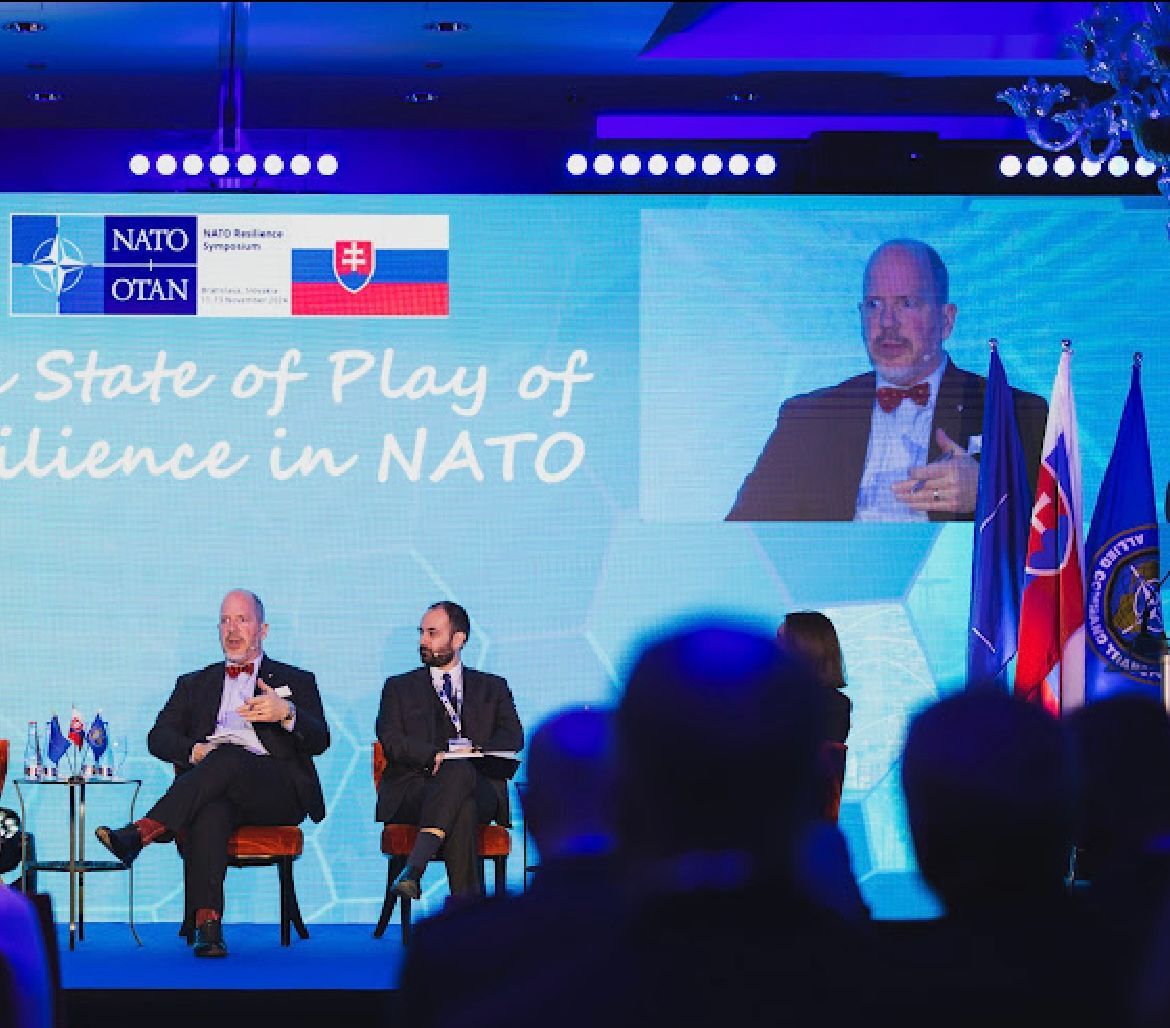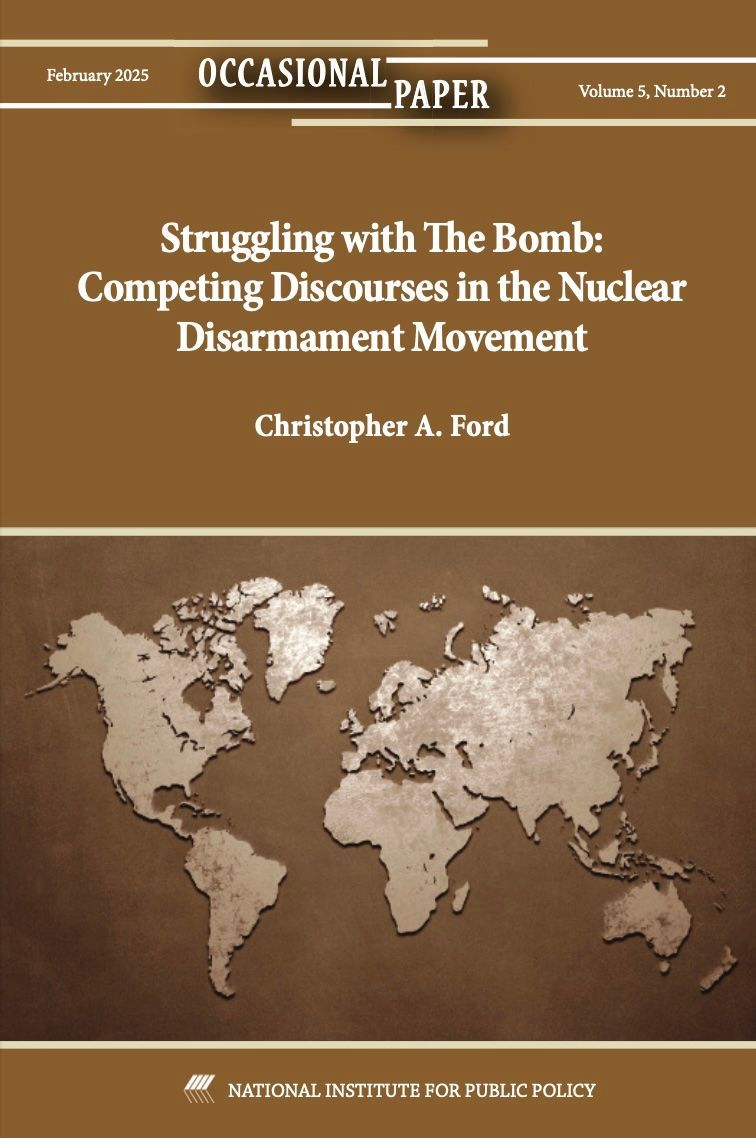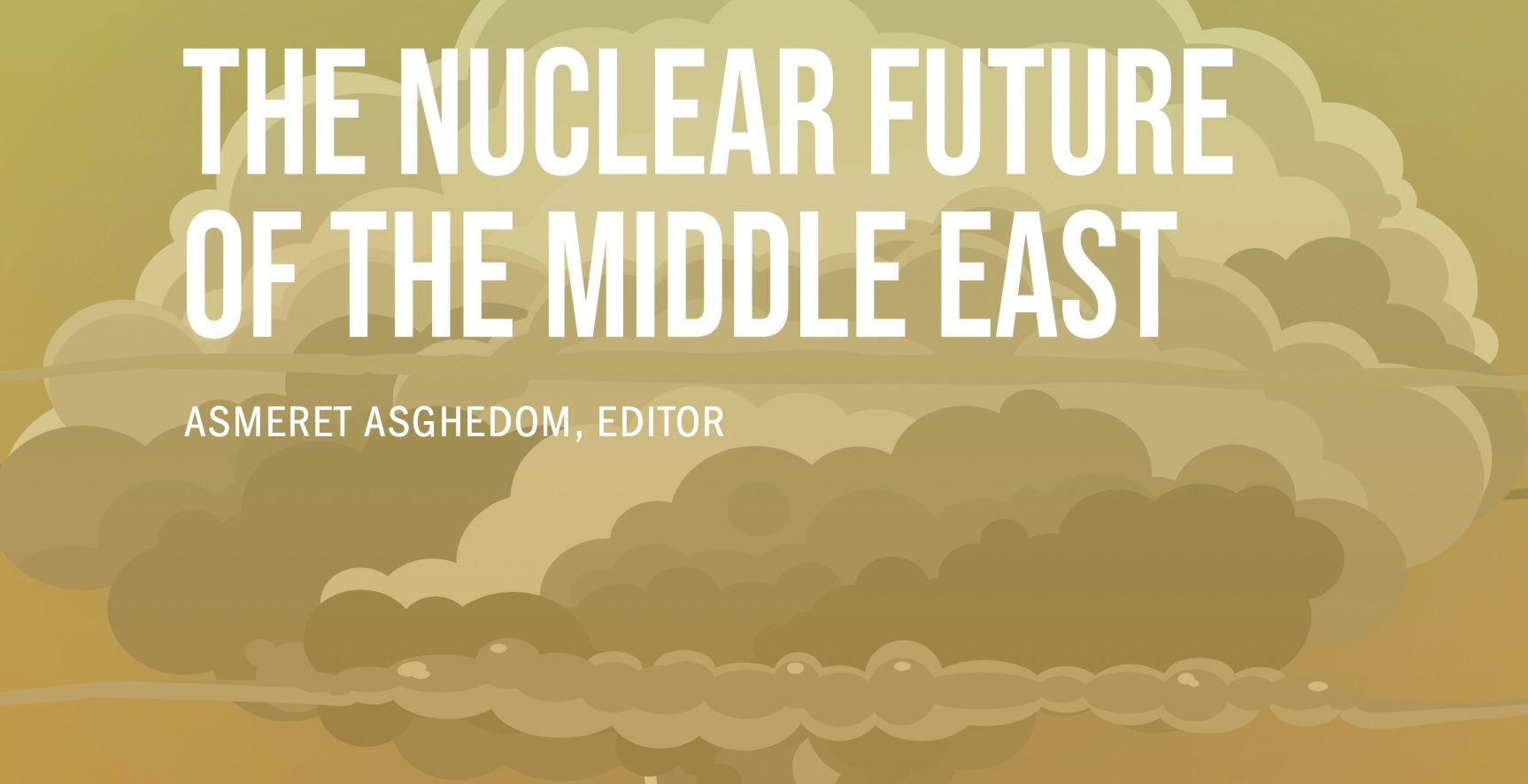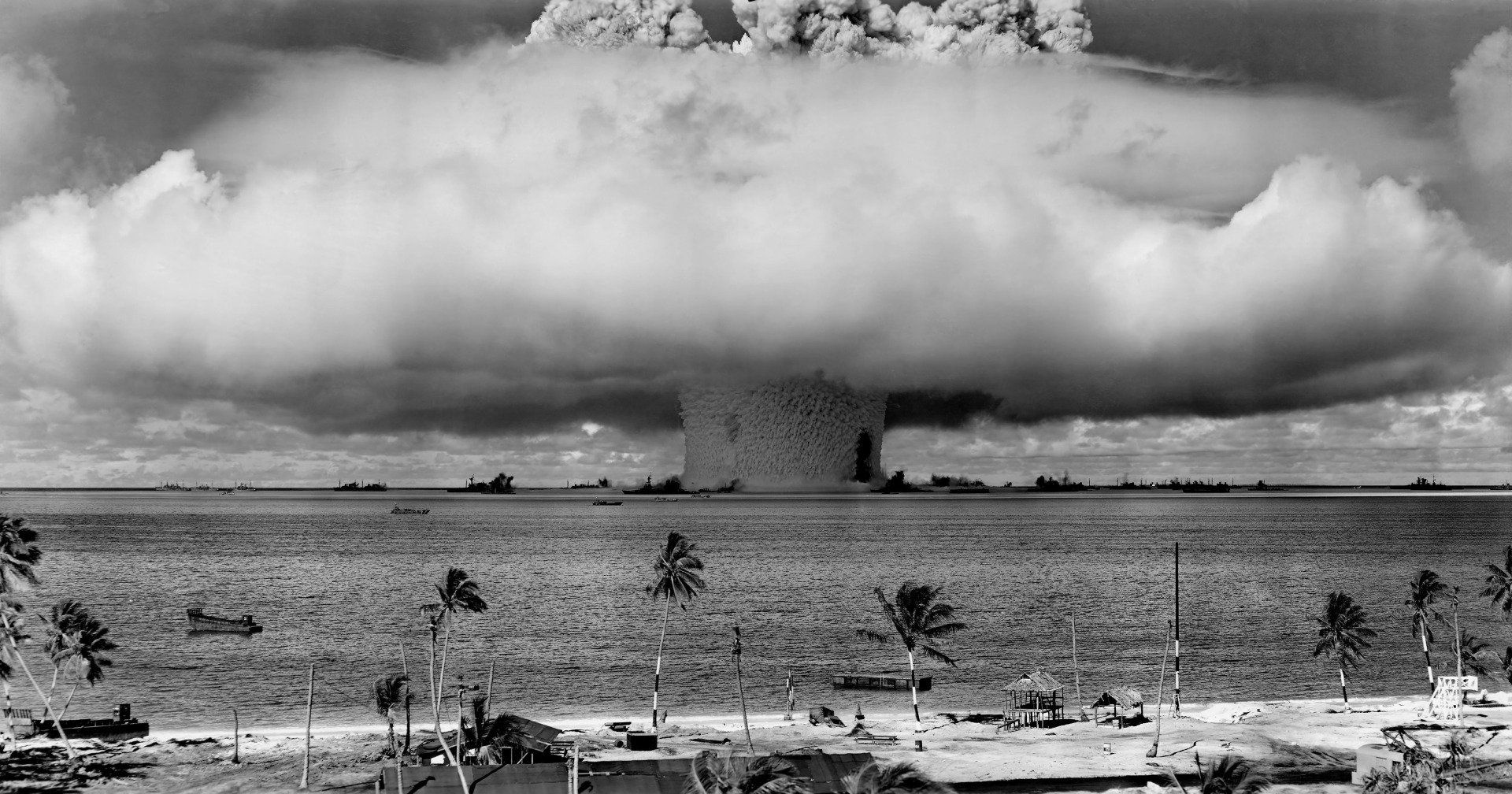The Hon. Christopher A. Ford
New Paradigms Forum -- International Security Policy Since 2009
Threats to NATO Resilience
Below is the written text upon which Dr. Ford based his oral remarks on November 12, 2024, to the NATO Resilience Summit in Bratislava, Slovakia.

Good morning, and thank you for having me to speak to you at NATO’s Third Resilience Summit. It’s a great pleasure to be here in Bratislava, and especially to follow my friend Angus Lapsley, with whom I had the pleasure of working closely several years ago when I was still in the U.S. Government and he was in Her Majesty’s.
These days, of course, I can only offer my personal views, and have no ability to speak for anyone else, but I’m pleased to have the chance to join my fellow panelists in discussing the resilience challenges that our Alliance faces today.
The Challenge of Adversary Action
Societal resilience is very much on people’s minds right now, of course, driven in part by things like the terrible recent flooding in Spain. I’ll be speaking about resilience from a somewhat different perspective this morning, however, because I would like you to focus very specifically upon resilience threats from deliberate adversary action. This is in many ways is an even more challenging problem, since the threat here has agency.
In this context, unlike with natural disasters, there are actually clever and well-resourced people out there looking for ways to target us in order to cause as much harm as possible – and whose job it is to adapt to what we do, learn from our responses, and adjust their own approaches in order to maximize impact. This willfulness and adaptive behavior makes adversary action an especially grave challenge to our resilience planning.
So let me highlight some aspects of the current adversary-based challenge to NATO resilience.
Collaboration by Rogue Regimes Big and Small
First of all, it’s worth stressing that we have now entered a period in which it is no longer possible to disaggregate the “great power competition” problem set from the seemingly separate “rogue regime” problem sets of Iran and North Korea. Unfortunately, these previously distinct challenges are well along the way to merging.
Both North Korea and Iran have now become deeply entangled in Russia’s revisionist wars of aggression here in Europe. Iran and North Korea both supply Russia with arms, and China supplies it with financial technology and other aid, thus helping make up for the Kremlin’s own challenges of meeting the staggering munitions capacity demands of modern high-intensity conventional warfare. North Korea, in fact, also now seem to be sending troops into the fight as well.
The world of smaller rogue regimes is thus now deeply enmeshed in supporting strategic revisionism not just in political and rhetorical but now also in highly concrete ways.
At the same time, both Russia and China have shifted emphatically from an earlier, vaguely supportive approach to nuclear nonproliferation to what can now only be described as a fundamentally “pro-proliferation” one. Some years ago, there was at least a fighting chance that Moscow and Beijing might support policies to prevent proliferation because they saw that their interests, too, were served by there not being multiple new sources of potential nuclear war risk in the world. Now, however, Russia is essentially a military ally of the world’s two worst rogue proliferators, while China has stopped even pretending to care about putting any kind of restriction or sanctions on either Iran or North Korea.
So the world’s smaller disruptors and destabilizers are now thoroughly in bed with its big ones, and vice versa – and we in NATO cannot pretend any longer that these are entirely separate issues. We can no longer afford to be divided amongst ourselves in the face of such threats.
Provocation and Risk-Tolerance
This increasingly collaborative group of threat actors, moreover – whom I have elsewhere termed the “Dark Quad” – increasingly see their ability to absorb cost and tolerate risk as a source of powerful comparative advantage in dealing with their perceived enemies among the Western democracies. I believe they still fear our military potential, but they see us as politically divided, societally weak, and fundamentally risk-averse, and they assume that by provocative and disruptive behavior and various sorts of saber-rattling they can keep us off-balance and sufficiently afraid of entanglement and escalation that we will be deterred from trying to resist their aggressive and disruptive plans.
This is, in short, a very deliberate effort to exacerbate our political divisions, worries about escalation, and distaste for nuclear risk, and to weaponize these things for coercive bargaining. And this involves much more than just the use of nuclear saber-rattling in what I call an “offensive nuclear umbrella” that can deter others from impeding wars of conquest and thus facilitate regional aggression.
More broadly, these increasingly collaborative adversaries are engaged in an ongoing campaign to confront the West with constant challenges from an array of shifting but multi-layered and mutually-reinforcing provocations just below the level of direct armed conflict that may – and are indeed intended to – test our political and psychological resilience in unprecedented ways.
Such a strategy of constant, low-level engagement and operational “friction” does many things at once. It is, of course, intended to distract, preoccupy, disorient, and unsettle Western decision-makers, making effective allied collective action more challenging and sustained attention on coherent Western strategy and counterstrategy more difficult to achieve.
But it is also a tool for collecting intelligence about our reactions, helping the adversaries learn what rattles us, what our reaction times are, and where our strengths and weaknesses lie in responding to their provocations. And it offers the ongoing option to these adversaries of stepping up any given element of this “friction” campaign at will – or perhaps all of them at the same time – either in opportunistic ways for coercive bargaining or in support of (or preparation for) an actual military assault.
And that’s just what happens to stress our collective resilience in peacetime. From the Russians, for example, we already see a constant litany of provocations that includes cyber probes, airspace and maritime domain violations, the use of illegal chemical weapons on NATO soil, political subversion, and attempted assassination and sabotage operations in NATO countries.
In crisis or in war itself, however, we should expect any and all such pressures to accelerate massively – which leads me to another challenge to our resilience: full-scale attacks to cripple and cause cascading failures in Western critical infrastructure.
Infrastructure Attack in Crisis or Conflict
Whereas Western thinkers tend to think of deterrence as a situation in which things don’t happen – that is, in which an adversary chooses to remain passive because you have convinced him that aggression would be prohibitively costly – Russian literature sees what is loosely translatable as “strategic deterrence” in much more active terms. As the Israeli scholar Dmitry (Dima) Adamsky’s compellingly describes in his recent book The Russian Way of Deterrence, deterrence à la Russe sees strategic deterrence as “action itself,” consisting of ongoing, “concrete engagement of the competitor” and “signaling by actual engagement.”
The Russian concept of “strategic deterrence,” Dima writes, is a concept in which military writers there
“perceive strategic interaction holistically, as encapsulating a permanent dialectics between two coercive stratagems: ‘intimidation’ or ‘fear-inducement’ (ustrashenie), which refers to declaratory signaling and manifestations of resolve and capability, and ‘forceful deterrence’ (silovoe sderzhivanie), which refers to a [swelling crescendo] of limited use of force, on the battlefield or beyond, to coerce the adversary and shape his strategic behavior. Implicitly, both stratagems could and should be employed in tandem during peace time, the period of threat[,] and wartime.”
As I’ve already noted, this mindset clearly involves the creation of ongoing, disorienting operational “friction” even in peacetime. Unsurprisingly, therefore, in wartime, it also highly prizes the capability to inflict crippling – or at least disorienting and functionally disruptive – harm on the adversary at the earliest possible point. And there clearly is a strong emphasis in Russian thinking upon creating and maintaining the capacity to disable and degrade critical infrastructure, communications, and other adversary systems as early as one can.
One important recent conceptual innovation in Russian thinking is thus what has become known as “SODCIT” – an acronym for “Strategic Operation for the Destruction of Critically Important Targets.” SODCIT is part of how Russian strategists imagine being able to seize the advantage early in a conflict with the West, maximizing the Kremlin’s ability not just to successfully conduct operations against a disoriented enemy, but also, more broadly, to facilitate coercive bargaining and maximize chances of achieving war termination on terms favorable to Russian strategic goals. Significantly, this concept seems to include explicit efforts to inflict what is termed “deterrence damage,” not just by hitting military-industrial infrastructure, but also “countervalue” critical infrastructure such as civilian power stations, oil refineries, and fuel, water, and gas delivery systems in order to achieve psychological effects.
In open Russian literature, this concept revolves largely around concepts of mass strikes on critical targets at long range with precision-guided conventional missiles, but there is no reason to think that the concept does not – or would not, in certain circumstances – apply equally to nuclear weaponry and to non-kinetic tools such as cyber operations, counterspace weaponry, electronic warfare, sabotage and assassination, disruption of energy supply and undersea communications networks, and perhaps even the actual, small-scale use of chemical, biological, radiological, or nuclear (CBRN) weaponry.
With respect to cyberattacks upon both military and civilian critical infrastructure, for instance, we should expect that in a conflict, the Russians – and presumably also China, which has pursued similar technical and operational capabilities – will attack various forms of Western infrastructure and domestic capabilities. Nor is this hypothetical: as many experts and government officials have warned for years, both Russia and China have been methodically developing capabilities to this very purpose, and have been effectively trying to map and pre-position themselves in our networks to this end.
Nor would such attacks necessarily only occur during a conflict. They might actually represent the first move of such a conflict, being undertaken essentially preemptively, before peace has actually broken down. As the U.S. Intelligence Community’s Worldwide Threat Assessment declared earlier this year about China, for example,
“If Beijing believed that a major conflict with the United States were imminent, it would consider aggressive cyber operations against U.S. critical infrastructure and military assets. Such a strike would be designed to deter U.S. military action by impeding U.S. decision making, inducing societal panic, and interfering with the deployment of U.S. forces.”
All of this, of course, presents us with very grave resilience challenges indeed, most emphatically including the likelihood of various forms of attack undertaken to create catastrophic cascading infrastructural failures, aiming to rattle and disorient Western societies and political leaders precisely when collective resolution is most needed, to disorient Western leaders, and to cripple governmental responses to Russian or Chinese aggression. If NATO is not taking such threats to resilience incredibly seriously, then shame on NATO.
In light of these threats, I’m especially glad to see the Alliance focusing so much more upon the resilience challenge. I suspect we still have some ways to go, but I hope that these comments about the range and severity of the adversary threat will help focus this meeting’s discussions still further.
Thank you.
-- Christopher Ford



Copyright Dr. Christopher Ford All Rights Reserved





